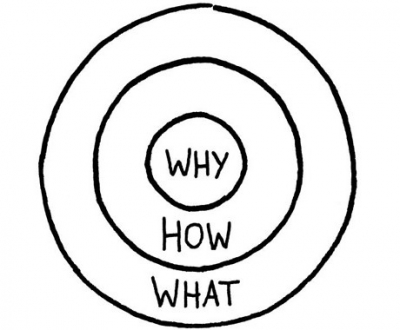 Previously, we wrote about how resolving conflict often has the side benefit of building a cooperative bond — even loyalty — between the factions. As each side gains a deeper understanding of the others’ viewpoints, respect builds and morale improves. Cooperative, low stress interactions, create a fertile environment for productive brainstorming, ultimately boosting the health of your organization.
Previously, we wrote about how resolving conflict often has the side benefit of building a cooperative bond — even loyalty — between the factions. As each side gains a deeper understanding of the others’ viewpoints, respect builds and morale improves. Cooperative, low stress interactions, create a fertile environment for productive brainstorming, ultimately boosting the health of your organization.Being respectful to others, being open to hearing their perspective, and taking the time to understand their objective are very important, but you’ll need more knowledge in your toolkit to dispel conflict when the conflict gets tough. So, let’s dig deeper today.
How can you demonstrate that you are being respectful and open and trying to understand the other’s perspective?
Here are the top 5 proven techniques you can add to your toolkit:
- Ask questions about the other person’s recommendations or point of view in a sincere, non-judgmental manner. Drill down to make sure you totally understand all of their objectives, concerns, and potential obstacles that you may both face.
- Replay or paraphrase their points back to show your understanding, and ask for confirmation that you “got it.”
- Make sure your body language is open and consistent with your words. If they’re not, people instinctively believe your non-verbal message over the spoken word.
- Even if you don’t agree, be sure to acknowledge that you hear and understand the other person’s points.
- It wouldn’t hurt (and yes, it could really help) to verbalize some of your “opponents” points that you think are good, smart and, or useful. A sincere compliment, or statement of approval and recognition will go a long way towards resolving conflict.
 In Part 3 of this series, we’ll examine the five conflict styles that help people understand their own responses as well as diffuse conflict with others. Specifically, we’ll look at the five conflict styles that Kenneth W. Thomas and Ralph H. Kilmann identified and can be assessed in the Thomas-Kilmann Conflict Mode Instrument (TKI), a globally accepted, widely used diagnostic assessment for resolving conflict.
In Part 3 of this series, we’ll examine the five conflict styles that help people understand their own responses as well as diffuse conflict with others. Specifically, we’ll look at the five conflict styles that Kenneth W. Thomas and Ralph H. Kilmann identified and can be assessed in the Thomas-Kilmann Conflict Mode Instrument (TKI), a globally accepted, widely used diagnostic assessment for resolving conflict.Understanding the subtleties of conflict and personality styles goes a long way towards elevating an organization’s harmony and effectiveness. At Merit, we frequently facilitate multiple Conflict Management training sessions for our clients where we adjust the level of detail to group (i.e., customer service reps, new managers, and the senior team.) For more information, please contact Jim Wynne at jwynne@meritcd.com or call 610-225-0449.
 I aspired to broaden my career and went back to school for a Masters in Leadership Development about 12 years ago. Through a confluence of introductions, opportunities and also being an adjunct instructor at Drexel University, I joined one of my cohort’s businesses, Merit Career Development. Initially, I began helping them with a new branding initiative, but in an “Ah Ha” moment we realized that I’d likely be a strong trainer for Merit, too. We were right. I have been running corporate trainings for Merit now for five years and I love it! But here’s the surprise: one of my favorite courses to facilitate, is Conflict Management (followed closely by Critical Thinking & Decision-Making.)
I aspired to broaden my career and went back to school for a Masters in Leadership Development about 12 years ago. Through a confluence of introductions, opportunities and also being an adjunct instructor at Drexel University, I joined one of my cohort’s businesses, Merit Career Development. Initially, I began helping them with a new branding initiative, but in an “Ah Ha” moment we realized that I’d likely be a strong trainer for Merit, too. We were right. I have been running corporate trainings for Merit now for five years and I love it! But here’s the surprise: one of my favorite courses to facilitate, is Conflict Management (followed closely by Critical Thinking & Decision-Making.)
 As the image to the left illustrates, participatory learning, especially using simulation for practice, provides the highest level of retention for training, second only to “teaching others.”
As the image to the left illustrates, participatory learning, especially using simulation for practice, provides the highest level of retention for training, second only to “teaching others.” Studies show that lack of EQ may limit a person’s ability to achieve results. Lower EQ scores correlate with lower merit pay increases, lower job satisfaction and more burnout. Managers’ and supervisors’ EQ scores correlate with their performance ratings.
Studies show that lack of EQ may limit a person’s ability to achieve results. Lower EQ scores correlate with lower merit pay increases, lower job satisfaction and more burnout. Managers’ and supervisors’ EQ scores correlate with their performance ratings. We all have specific words or phrases that are steeped in emotion. During the 1960s and 70s, the term “nuclear power” raised a great deal of emotion—both positive and negative. Similarly today we have emotionally charged words or phrases such as “gun control”, terrorism, and consumer privacy. It is important to recognize one’s own emotionally charged phrases and stop the emotional hijacking that is about to take place.
We all have specific words or phrases that are steeped in emotion. During the 1960s and 70s, the term “nuclear power” raised a great deal of emotion—both positive and negative. Similarly today we have emotionally charged words or phrases such as “gun control”, terrorism, and consumer privacy. It is important to recognize one’s own emotionally charged phrases and stop the emotional hijacking that is about to take place. The CrossFit program was developed to enhance an individual’s competency at all physical tasks. Athletes are trained to perform at multiple, diverse, and randomized physical challenges. This type of fitness is demanded of military and police personnel, firefighters, and many sports requiring overall physical prowess.
The CrossFit program was developed to enhance an individual’s competency at all physical tasks. Athletes are trained to perform at multiple, diverse, and randomized physical challenges. This type of fitness is demanded of military and police personnel, firefighters, and many sports requiring overall physical prowess. How can crossfit training your mind benefit you in your workplace? Cross-functional training has many benefits for organizations as well as employees. At an organizational level, cross training skillsets help safeguard the organization against widening skills gaps. Organizations that cross-train employees across a range of functions put themselves in a good position to prevent sudden shortfalls and manage surges in specific areas when there is a spike in demand. On an individual level, cross training enables employees to explore and assess alternative interests and abilities. It also enables managers to identify and nurture employees who show exceptional talent in a particular function. Cross-training yourself to learn new skills, can increase your employability and enable you to stay relevant.
How can crossfit training your mind benefit you in your workplace? Cross-functional training has many benefits for organizations as well as employees. At an organizational level, cross training skillsets help safeguard the organization against widening skills gaps. Organizations that cross-train employees across a range of functions put themselves in a good position to prevent sudden shortfalls and manage surges in specific areas when there is a spike in demand. On an individual level, cross training enables employees to explore and assess alternative interests and abilities. It also enables managers to identify and nurture employees who show exceptional talent in a particular function. Cross-training yourself to learn new skills, can increase your employability and enable you to stay relevant.
 Why do we work at Merit:
Why do we work at Merit: More often than we’d like, managers have to manage conflict. Teams are human, after all, and arguments can arise for many reasons, from disagreements over workflow and competing priorities to perceived preferential treatment, or lack thereof.
More often than we’d like, managers have to manage conflict. Teams are human, after all, and arguments can arise for many reasons, from disagreements over workflow and competing priorities to perceived preferential treatment, or lack thereof. In recent years, a growing number of organizations have changed the way they are structured. The old top-down way of doing business, in which management wields all the power, is increasingly giving way to a collective leadership style, in which all employees are involved in setting and reaching company goals.
In recent years, a growing number of organizations have changed the way they are structured. The old top-down way of doing business, in which management wields all the power, is increasingly giving way to a collective leadership style, in which all employees are involved in setting and reaching company goals. A communication plan is an essential tool for project managers to plan for resources, establish deadlines and reduce the likelihood of costly surprises. Project managers can use communication plans to create goals, set expectations, allow room for criticism and enable a dialogue for all stakeholders.
A communication plan is an essential tool for project managers to plan for resources, establish deadlines and reduce the likelihood of costly surprises. Project managers can use communication plans to create goals, set expectations, allow room for criticism and enable a dialogue for all stakeholders.